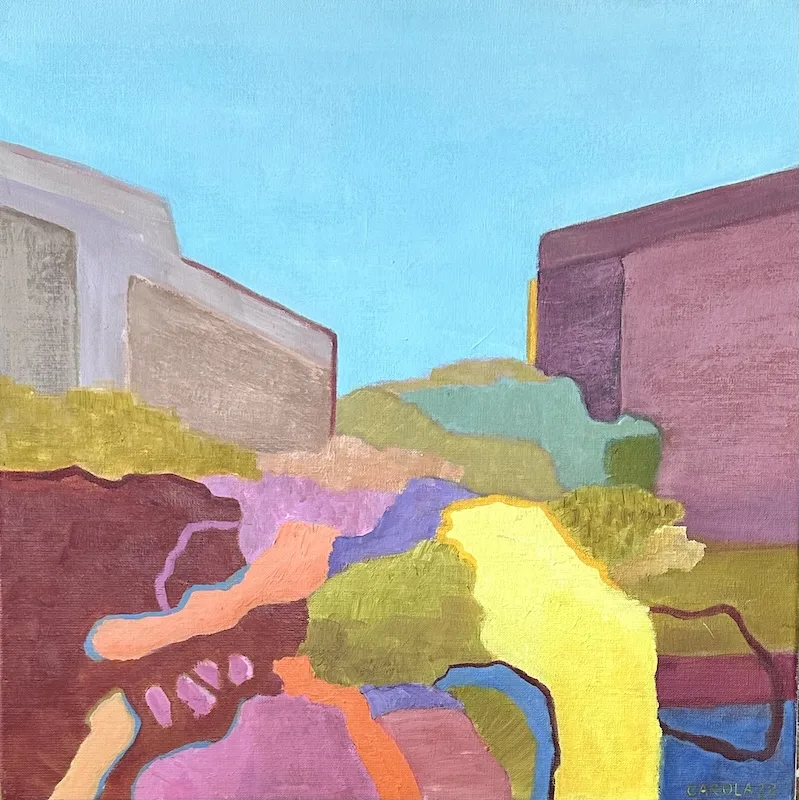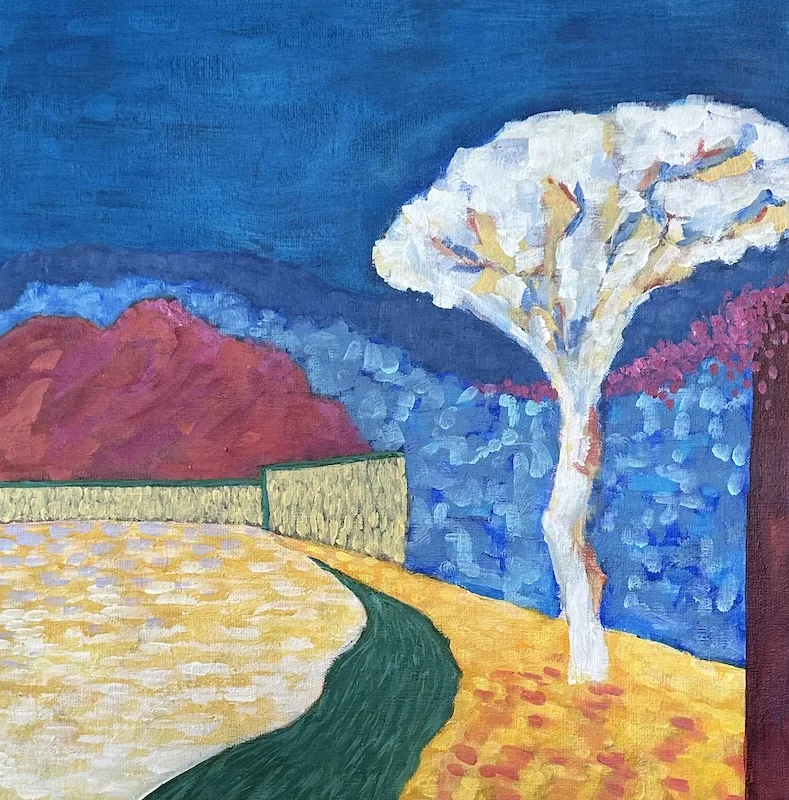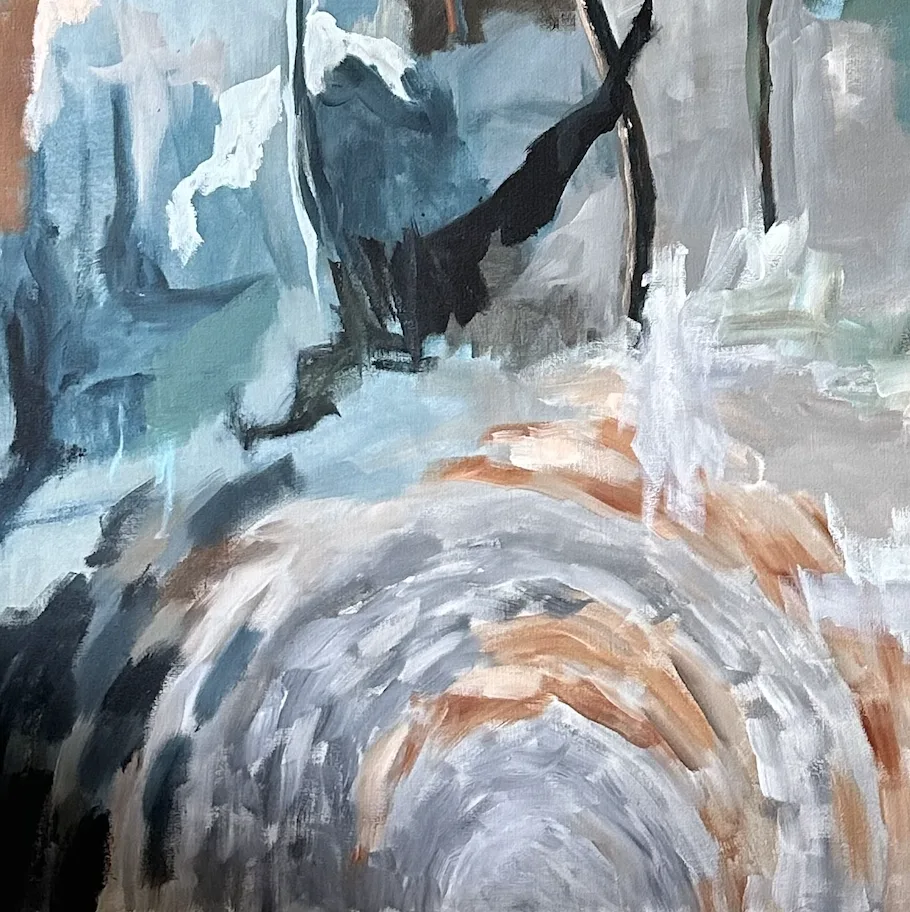
Semi Abstract painting
February 2025
The harmony between realism and abstraction
Semi-abstract painting offers a fascinating balance between the recognizable and the unknown. It allows artists to explore and express both reality and their inner world. For the viewer, this style is a rich visual and emotional experience, full of layers of meaning and interpretation.
What exactly does semi-abstract art mean?
Usually figurative art is defined in contrast to abstract art. The term “semi-figurative” here refers to the fact that these paintings are somewhere in between. Thus, they are not abstract but also not fully consistent with the definition of figurative. Semi abstract painting is the painting movement that sits between realism and abstraction.
Recognizable shapes, but in different form
If an image is semi-abstract, it means that there are elements in a work of art that resemble reality, but they are rendered in a stylized and non-realistic way. If the real is not completely abandoned, but there are still recognizable forms to be seen we call this “abstraction,” In a semi-abstract painting, therefore, objects or people will still be recognizable, but in a different form.
Semi abstract painting is an exciting art form
Semi-abstract painting is an exciting art form that bridges the gap between realism and abstraction. It combines recognizable elements with abstract compositions, giving artists the freedom to express both concrete and conceptual ideas. This approach offers a unique balance that is both visually intriguing and conceptually rich.
Between abstract and figurative
Semi-abstract painting lies between pure abstraction and figurative art. In this style the subjects are still partially recognizable, but they are presented in a way that leaves room for interpretation and integrates abstract elements. The emphasis is often on form, color, texture and composition, while the subject is only a starting point for artistic expression.
Characteristic of semi-abstract work are:
Partial recognisability:
Elements of the painting are recognizable, but not completely realistically depicted.
Abstraction of shapes:
Shapes can be distorted, simplified or stylized.
Experimenting with colors:
Colors can be used unrealistically or expressively to convey emotion or atmosphere.
Texture and technique:
Various techniques are used to create texture and depth, often with mixed media.
The history of semi-abstract painting
Semi-abstract painting has its roots in the early 20th century, when artists began experimenting with abstraction. The transition from realism to abstraction was not sudden: many artists, such as Paul Cézanne and Vincent van Gogh, laid the groundwork for this style by experimenting with shapes and colors. Throughout the 20th century, this style evolved further through the influence of movements such as Cubism, Expressionism and Surrealism. Artists such as Georges Braque and Pablo Picasso, with their cubist works, and Marc Chagall, with his dreamlike compositions, contributed to the development of semi-abstract techniques.
Techniques and approaches to semi abstract painting
Kunstenaars die in een semi-abstracte stijl werken, gebruiken een breed scala aan technieken om hun visie te realiseren. Hier zijn enkele veelgebruikte benaderingen:
Fragmentatie en reconstructie:
Elementen van de werkelijkheid worden gedeconstrueerd en opnieuw samengesteld op een manier die nieuwe perspectieven en betekenissen creëert.
Vereenvoudiging:
Complexe vormen worden gereduceerd tot hun essentiële onderdelen, wat leidt tot een meer abstracte weergave zonder volledig het herkenbare te verliezen.
Kleurgebruik:
Kleuren worden vaak expressief en symbolisch gebruikt, los van hun natuurlijke verschijning, om emotie en sfeer te versterken. Gemengde media: Door verschillende materialen en technieken te combineren, zoals acryl, olie, collage en inkt, kunnen kunstenaars rijke texturen en visuele lagen creëren.
Experimentele composities:
De compositie speelt een cruciale rol in semi-abstract werk, waarbij onconventionele plaatsing en verhoudingen van elementen worden verkend.
Meaning and interpretation of semi-abstract painting
One of the most powerful aspects of semi-abstract painting is the room for interpretation it offers. Because the work contains both recognizable and abstract elements, the viewer can approach it on multiple levels. The recognizable forms provide a foothold, while the abstract components invite personal interpretation and emotional involvement. This ambiguity makes semi-abstract paintings particularly compelling because they can evoke different reactions and interpretations depending on the viewer. This makes the experience of viewing semi-abstract art dynamic and often deeply personal.
Semi-abstract painting in contemporary art
In the modern art world, semi-abstract painting remains a vibrant and popular style. Contemporary artists continue to explore and expand this approach, often using new technologies and materials. The versatility of this style makes it suitable for a variety of contexts, from galleries to public spaces to private collections.
Text and painting by Carola Siksma Ruiters
Read more PaintingWiki articles



